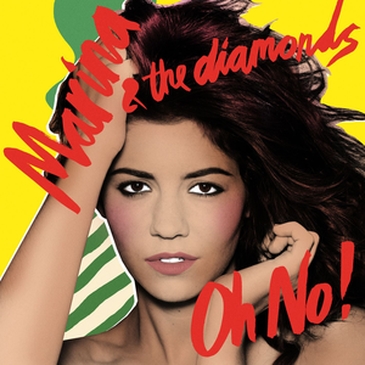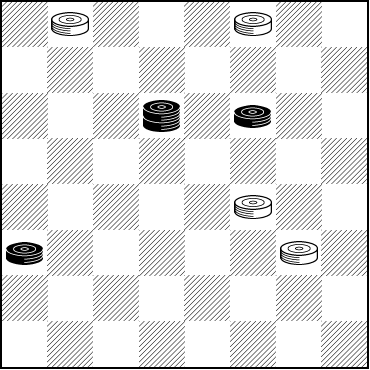The Checker Maven
Jump to navigationOh No!

"Oh no" was a song sung by a group called Marina and the Diamonds back in 2010. We must admit that no one in the Checker Maven offices has either heard of the song, or the group, for that matter. However the song contains the following timeless lyrics:
Da-da-dum, da-da-dum
Da-da-da-da-da-da-dum
Da-da-dum, da-da-dum
Da-da-da-da-da-da-dum
Da-da-dum, da-da-dum
Da-da-da-da-da-da-dum
Oh! Oh, no! Oh, no! Oh, no, oh!
In checkers, some of us tend to say "Oh no!" when we see a problem like the one below, with the dreaded label "Black to Play, White to Win." But nevertheless we've selected it as this month's Checker School entry. It's rather a challenge and is attributed to a Mr. E. A. Jones of Australia, date unknown but certainly prior to 1945, when it appeared in Andrew J. Banks' eclectic book, Checker Board Strategy.

BLACK
Black to Play, White to Win
B:B12,22,K23:W9,14,30,32
Can you solve this one or will you just say "Oh no!" or even "Da-da-da-da-da-da-dum"? No matter; clicking on Read More yields an "Oh yes!" about showing you the solution.![]()
Solution
23-18 32-27 12-16 14-10 18-14---A 9-6---B 14x7 30-26 22x31 6-2 31x24 2x27 White Wins.
A---The computer gives 16-19 but no one would likely play that. White would simply have a routine, if long, win. Recovering a piece with the fork is pretty irresistable.
B---Master analyst Brian Hinkle wrote to us to point out that 10-6 also wins here. One way is 10-6 14x5 6-2 5-9 2-7 9-14 7-11 16-20 11-15 14-18 15-10 and Black loses a piece.
A classic in-and-out. Mr. Banks calls this a challenge to the student. We think the challenge is more in finding the stroke and tempting Black into it, than in winning with a piece up.
When the situation is one to move, the other to win, one can always question the first move by the losing side. 23-18 from the looks of it gives Black the best chances. But you are of course welcome to experiment with your computer or your own analysis.
In any event, we find this to be a very entertaining problem and we hope you enjoyed it.
You can email the Webmaster with comments on this article.
